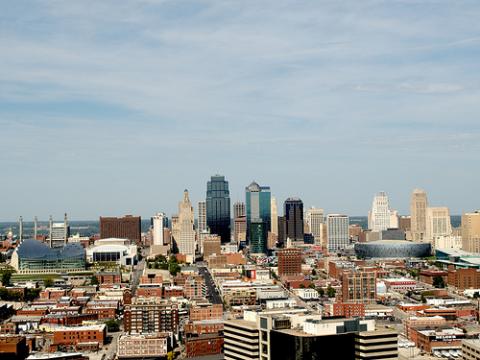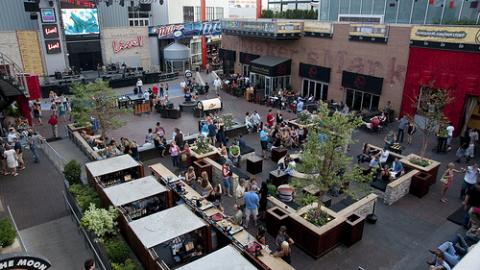Bordering and sharing a name with its suburban neighbor in adjacent Kansas, Kansas City, Missouri is the largest city in the state with a population of more than 460,000 in 2011. Known for its substantial musical contributions to jazz and blues starting in the 1930s, Kansas City is also informally referred to as the "Heart of America" by Kansas City residents since it is situated very near the geographic center of the nation. Although Missouri is substantially less diverse than the rest of the nation, Kansas City is much more diverse with a population that is 55 percent white, 30 percent African-American, 10 percent Latino, and 3 percent Asian.
Although more than 18 percent of city residents live in poverty – a rate greater than the rest of the state and nation, Kansas City can claim successfully to be home to nearly double the percentage of black-owned business firms and a slightly higher percentage of women-owned firms than the rest of the nation. The number of Latino-owned businesses has increased in Kansas City with the help of organizations like the Hispanic Economic Development Corporation, which has helped add over 1,100 businesses since its inception.
Currently, the largest neighborhood revitalization project in Kansas City is the Green Impact Zone - a 150-square block area of one of Kansas City's most distraught and impacted neighborhoods that has a 25 percent property vacancy rate and median income of less than $30.000. With investments from federal, local, public, and private sources, the Green Impact Zone aims to reduce the 11.7 percent unemployment rate in the city and the estimated 50 percent unemployment rate currently in the targeted area. In addition to the $50 million TIGER grant awarded by the U.S. Department of Transportation, Wells Fargo has donated 23 houses to the Green Impact Zone neighborhood along with a $7,500 cash donation per home for rehabilitation. Most recently, Brad Pitt's Make It Right Foundation has announced a donation of $2.3 million toward the $14 million needed to construct 50 affordable housing units in the Zone. This revitalization project also includes infrastructure replacements of the Troost Bridge, the establishment of public transportation, sustainable retrofitting, and employment assistance.
Although this is only a revitalization of a 150-square block area, other underserved and underinvested areas in Kansas City have not been ignored. The Mayor's New Tools Task Force is an initiative to develop a tool box for the distressed areas of Kansas City that have not benefitted fully from the development investments made in selected areas. The Task Force has 30 appointed members with a mission to create and support self-sufficient, sustainable communities while engaging the community in these efforts. The Task Force analyzes policy implementations and other financial considerations to assess the barriers to community development in all perspectives. One organization to come out of this process is WeDevelopment, a community development credit union, which was developed over a 9-month period and plans to open in Summer 2012. Other Projects that will help develop the community, such as a recycling center, use of vacant lots, and establishing urban businesses, have also been proposed.
An overview of community wealth building efforts follows:

